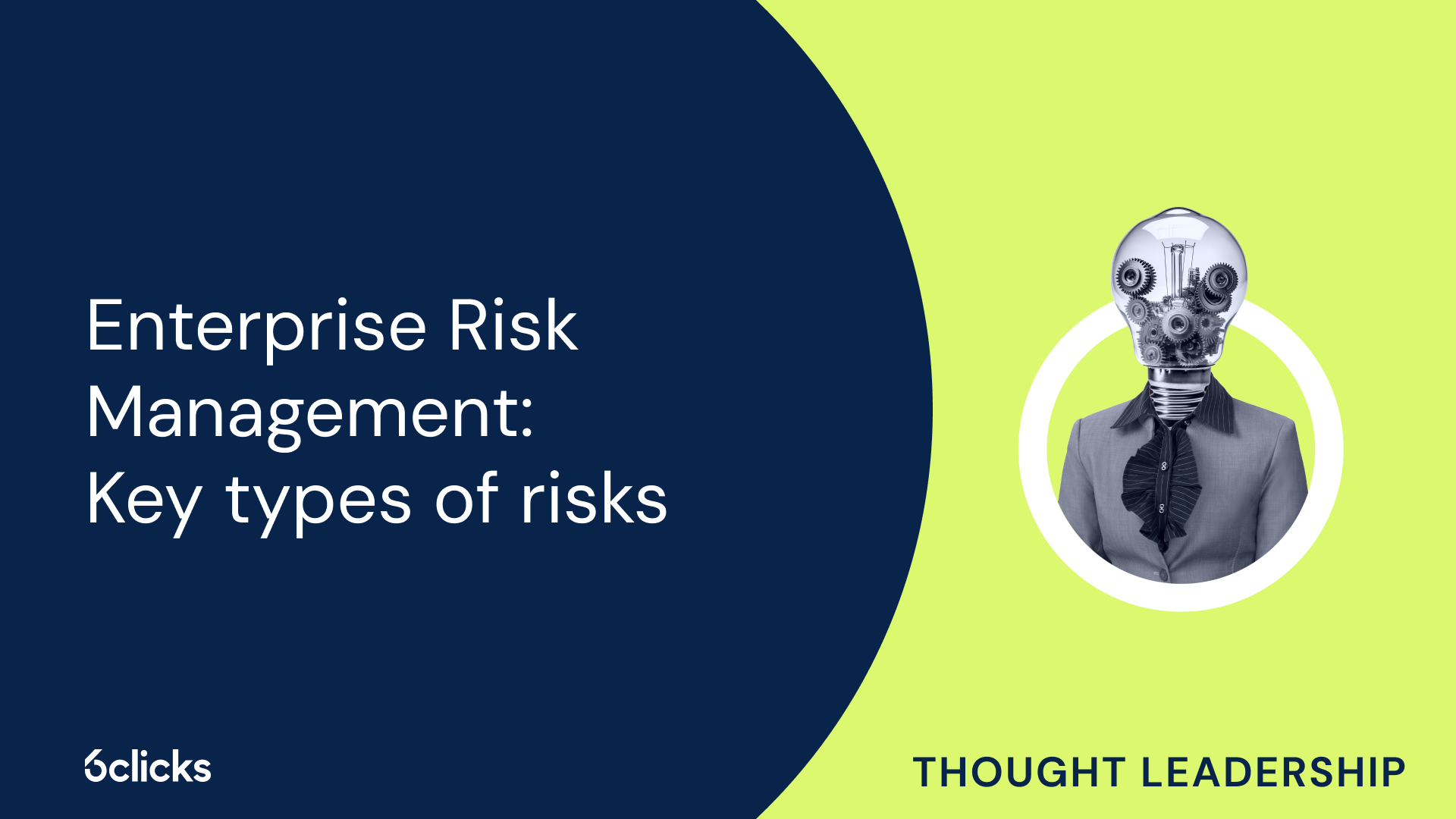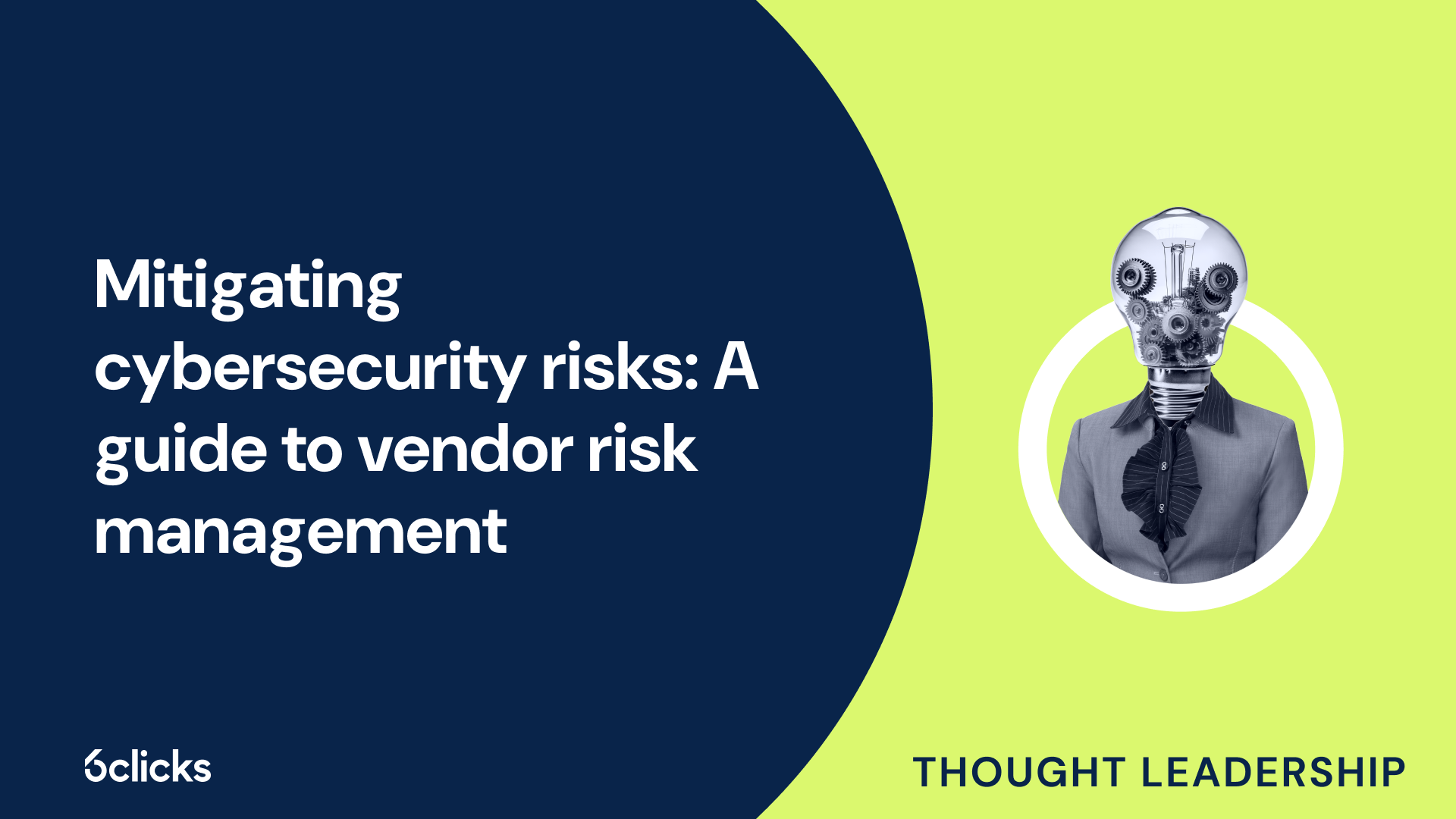The GRC buyer’s guide for 2025: Building resilience with AI-powered, federated solutions
-1.png?width=314&height=391&name=Group%20193%20(1)-1.png)
The GRC buyer’s guide for 2025: Building resilience with AI-powered, federated solutions
Overview of CIS
The Center for Internet Security (CIS) is a non-profit organization that provides a set of best practices and guidelines for organizations to secure their systems and networks. The CIS Controls are a prioritized set of actions that help organizations defend against common cyber attacks. These controls provide a framework for implementing security measures and help organizations in reducing their risk profile. The CIS Controls are continuously updated to address emerging cyber threats and provide organizations with the necessary tools and resources to protect their critical assets. By implementing these controls, organizations can improve their cyber defense posture and mitigate the risks associated with unauthorized access, malware attacks, and other cyber threats. In this article, we will explore the number of controls that CIS has developed and how they can help organizations enhance their security practices.
Definition of controls
The controls used in the CIS Critical Security Controls framework refer to a set of recommended cybersecurity best practices and defensive actions. These controls aim to provide specific and actionable ways to mitigate cyber threats effectively. By implementing these controls, organizations can improve their resilience to cyberattacks and enhance their overall security posture.
The CIS Controls consist of 18 different guidelines that highlight clear actions to protect critical assets and defend against security threats. These controls cover various aspects of cybersecurity, including network devices, unauthorized software, mobile devices, access control management, incident response plans, secure configuration, and more. Each control is designed to address specific vulnerabilities and reduce the attack surface and window of opportunity for potential attackers.
It is important to note that the CIS Controls differ from the CIS Benchmarks. While the CIS Benchmarks focus on providing configuration recommendations for specific systems, products, or devices, the CIS Controls offer a comprehensive set of guidelines for the entire IT system. The controls provide organizations with a holistic approach to cybersecurity, covering technical controls, security practices, and risk management.
Types of CIS controls
The CIS Controls consist of 18 different guidelines that organizations can implement to enhance their cybersecurity posture. These controls fall into three categories: basic, foundational, and organizational controls.
- Basic Controls: These controls provide essential measures to protect against common and dangerous attacks. They include inventory and control of hardware and software assets, continuous vulnerability management, and secure configurations for network devices and operating systems. By implementing these controls, organizations can effectively reduce the attack surface and eliminate major security weaknesses.
- Foundational Controls: These controls build upon the basic controls and address more advanced threats and vulnerabilities. They cover areas such as controlled access to critical assets, continuous monitoring and detection of unauthorized activity, and data protection and recovery mechanisms. Implementing these controls ensures that organizations establish a strong foundation for their cybersecurity defenses.
- Organizational Controls: These controls focus on the human element and the broader aspects of cybersecurity management. They encompass areas such as security training and awareness programs, incident response planning and execution, and penetration testing and red teaming exercises. By implementing these controls, organizations can strengthen their overall security posture and better defend against emerging cyber threats.
By understanding and implementing the various types of CIS Controls, organizations can significantly enhance their cybersecurity resilience and protect their critical assets from a wide range of cyber threats.
Implementing the 20 critical security controls
Implementing the 20 critical security controls is a crucial step in establishing effective cyber defense within an organization. These controls, outlined in the CIS Controls framework, provide a comprehensive approach to protecting against common and advanced cyber threats.
The controls are divided into three groups: foundational, organizational, and advanced. The foundational controls (controls 1-6) focus on basic cyber hygiene practices such as managing hardware and software assets, continuous vulnerability management, and secure configuration of network devices and operating systems.
The organizational controls (controls 7-16) address the human element and the broader aspects of cybersecurity management. These controls include security training and awareness programs, incident response planning and execution, and penetration testing and red teaming exercises.
The advanced controls (controls 17-20) tackle more sophisticated threats and vulnerabilities. They include implementing multi-factor authentication, secure configuration of applications, continuous monitoring and analysis of security events, and controlling the use of administrative privileges.
In version 8 of the CIS Controls, there are a few notable updates. These include an increased emphasis on the importance of ongoing vulnerability management, the inclusion of secure configurations for cloud-based assets, and the addition of controls related to securing the supply chain.
Implementing the 6 foundational security controls
Implementing the six foundational security controls is crucial for organizations to build an effective security strategy. These controls serve as the building blocks for a strong security posture and help protect against common cyber threats.
The first control focuses on developing a complete inventory of authorized and unauthorized hardware and software assets. By having visibility into all devices and software within the organization, it becomes easier to detect and mitigate potential vulnerabilities or unauthorized access.
The second control emphasizes continuous vulnerability management. Regularly scanning systems and applications for vulnerabilities and promptly patching or mitigating them minimizes the risk of exploitation by attackers.
Secure configuration of network devices and operating systems is another vital control. It involves implementing best practices for hardening and configuring devices and systems to reduce the attack surface and protect against known vulnerabilities.
The fourth control emphasizes control of software assets. Organizations should have processes in place to evaluate, acquire, and maintain software to ensure security and minimize the risk of unauthorized and vulnerable software being used within the network.
Controlled use of administrative privileges is the fifth foundational control. By restricting and monitoring elevated privileges, organizations can reduce the risk of unauthorized access and limit the potential damage that can be caused by a malicious actor.
Lastly, foundational control six focuses on maintenance, monitoring, and analysis of audit logs. Collecting and reviewing logs of events helps identify potential security incidents, detect unauthorized activities, and improve incident response capabilities.
These six foundational security controls form the foundation of an organization's security strategy. They differ from the critical security controls, which encompass a broader scope and address more advanced threats. However, without implementing the foundational controls effectively, it becomes challenging to achieve a strong security posture and effectively mitigate risks. Therefore, organizations must prioritize the implementation of these foundational controls to build a solid security foundation.
Additional CIS sub controls and supporting documentation
In addition to the foundational controls mentioned earlier, the CIS framework also includes additional sub controls that further enhance an organization's cybersecurity function. These sub controls provide additional layers of protection against specific security threats and vulnerabilities.
One such sub control focuses on implementing secure configurations for specific types of software or systems. This means adhering to configuration guidelines provided by the software or system vendors, as well as industry best practices. By following these guidelines, organizations can reduce the attack surface and minimize the risk of exploitation.
Another sub control emphasizes the importance of regularly updating security software and firmware. This includes keeping antivirus software, intrusion detection systems, firewalls, and other security solutions up to date with the latest patches, signatures, and updates. By doing so, organizations can ensure that they have the necessary defenses in place to detect and mitigate new and emerging threats.
Supporting documentation is also a crucial component of the CIS framework. This includes creating and maintaining documentation that outlines the organization's security policies, procedures, and guidelines. These documents serve as a reference for employees and provide a roadmap for implementing and maintaining strong cybersecurity practices.
Understanding the scope of CIS controls
Understanding the scope of CIS controls is a key aspect of developing a robust cybersecurity strategy. The Center for Internet Security (CIS) provides a comprehensive set of controls that organizations can adopt to enhance their security posture and protect against a wide range of cyber threats. These controls cover various areas, including network devices, software assets, access control management, incident response plans, and more. By understanding the scope of these controls, organizations can assess their current security practices, identify potential weaknesses, and implement the necessary measures to defend against security threats effectively. This article will explore the different areas covered by the CIS controls, highlighting their importance in mitigating cyber risks and providing guidelines for implementing strong security practices.
Components of a successful security program
A successful security program encompasses various components that work together to protect an organization's assets and mitigate cyber threats. Implementing the CIS controls is an essential part of this program. Here are some key components:
- Secure Process for Developing Applications: A secure software development life cycle (SDLC) ensures that applications are built with security in mind. It involves incorporating security controls throughout the development process, conducting code reviews, and performing vulnerability assessments and penetration testing.
- Identification and Addressing of Software Vulnerabilities: Regular vulnerability scans and continuous monitoring help identify and address potential weaknesses in software. Prompt patching and updates are crucial to protect against known vulnerabilities and emerging threats.
- Utilization of Standardized Configuration Templates: The use of standardized configuration templates ensures that network devices, operating systems, and applications are configured securely and consistently. This reduces the attack surface and minimizes the risk of misconfigurations that could be exploited by attackers.
- Separation of Production and Non-production Systems: Segregating production networks from non-production or testing environments is crucial. This prevents any compromise or accidental changes in non-production systems from affecting critical business operations.
- Training on Application Security Concepts: Educating developers, administrators, and end-users about common attack vectors, secure coding practices, and safe use of applications helps build a security-conscious culture within the organization. Regular security awareness training reduces the likelihood of falling victim to social engineering attacks.
- Conducting Penetration Testing: Regularly conducting penetration tests helps identify vulnerabilities and assess the effectiveness of security controls. This proactive testing allows organizations to remediate weaknesses before they are exploited by malicious actors.
By focusing on these components, an organization can strengthen its security posture, reduce the attack surface, and defend against a wide range of security threats.
Identifying and understanding assets and vulnerabilities
Identifying and understanding assets and vulnerabilities is a crucial step in safeguarding an organization's digital infrastructure. By conducting regular assessments and scans, organizations can proactively identify potential vulnerabilities in their systems and applications.
Vulnerability management plays a key role in this process. It involves conducting comprehensive assessments to determine the weaknesses and potential entry points in an organization's network. These assessments can be carried out using a variety of scanning tools and techniques. By analyzing the results, organizations can prioritize their efforts to address the most critical vulnerabilities first.
Furthermore, staying up-to-date with the latest information about potential threats is essential for proactive risk mitigation. This includes monitoring software updates, patches, and security advisories issued by vendors and industry experts. By promptly applying necessary updates and patches, organizations can safeguard their systems against known vulnerabilities and emerging threats.
Regular assessments and scans, combined with proactive vulnerability management practices, enable organizations to stay ahead of potential risks. By understanding their assets and vulnerabilities, organizations can implement appropriate security controls and measures to minimize the chances of successful attacks and protect sensitive data.
Establishing policies, processes and procedures for compliance with regulations
Establishing policies, processes, and procedures for compliance with regulations is a crucial part of any organization's security program. These measures help ensure that the organization adheres to applicable laws and regulations while also effectively managing and mitigating security risks.
In relation to the CIS controls, regulatory compliance plays a vital role in implementing and maintaining these best practice standards. The CIS controls provide a comprehensive framework for securing an organization's systems and data, covering areas such as asset management, access control, software updates, and incident response. By establishing policies, processes, and procedures aligned with these controls, organizations can effectively address potential vulnerabilities and enhance their overall security posture.
Compliance with regulations is important not only for legal and ethical reasons but also for mitigating security risks. Regulations provide guidelines and requirements that help protect sensitive information, prevent unauthorized access, and deter cyber threats. By following these regulations, organizations can minimize the risk of security breaches, data loss, and financial penalties.
To achieve regulatory compliance, organizations must develop and implement comprehensive policies that outline acceptable practices and procedures. These policies serve as a foundation for establishing processes and procedures to enforce compliance. Regular audits and assessments should be conducted to identify any gaps or areas of non-compliance, and remediation actions should be promptly taken to address these issues.
Training employees on cybersecurity best practices
Training employees on cybersecurity best practices is crucial for reducing cybersecurity risks and protecting the organization's systems and data. The actions of users can significantly impact the success or failure of an organization's security program. Without proper training, employees may unknowingly fall victim to cyber attacks, leading to breaches and data loss.
A well-designed security awareness program can educate employees on the importance of cybersecurity and equip them with the knowledge and skills to make security-conscious decisions. This program should cover key areas of cybersecurity best practices, including identifying and reporting security incidents, handling data securely, recognizing social engineering attacks, and staying aware of security updates.
By training employees to identify and report security incidents promptly, organizations can respond to potential threats in a timely manner, minimizing the impact on the business. Teaching employees how to handle data securely, such as using strong passwords, encrypting sensitive information, and properly disposing of confidential documents, ensures that data is protected from unauthorized access.
Recognizing social engineering attacks is crucial, as this is a common tactic used by cybercriminals to deceive employees into revealing sensitive information or performing malicious actions. By educating employees on these tactics and promoting a healthy skepticism towards unsolicited requests for information, organizations can mitigate the risk of falling victim to such attacks.
Lastly, staying aware of security updates and patches is essential in keeping systems and software protected against known vulnerabilities. Training employees to regularly update their devices and applications helps ensure that they are equipped with the latest security patches, reducing the organization's overall cybersecurity risk.
Key benefits of using CIS control framework
The CIS (Center for Internet Security) Control Framework is a set of best practices that organizations can implement to improve their cybersecurity posture. By following this framework, organizations can enhance their defenses against common attacks, reduce their attack surface, and effectively manage their cybersecurity risks. The key benefits of using the CIS control framework include providing a comprehensive and structured approach to cybersecurity, helping organizations prioritize their security efforts, ensuring alignment with industry standards and regulations, enhancing the organization's ability to detect and respond to security incidents, and improving overall security posture. This framework provides organizations with a roadmap to strengthen their cybersecurity defenses, protect critical assets, and mitigate the risks associated with cyber threats.
Improved cybersecurity posture and risk management
Implementing CIS controls can significantly improve an organization's cybersecurity posture and risk management capabilities. The CIS controls, or Critical Security Controls, provide a comprehensive framework that helps organizations protect against various cyber threats and enhance their overall security stance.
By adopting the CIS control framework, organizations benefit from a structured approach to risk assessment and mitigation. The controls help identify and address vulnerabilities in network devices, operating systems, and software assets, reducing the attack surface and minimizing opportunities for attackers. This enables organizations to establish effective security practices and enhance their defense against security threats.
Additionally, the CIS controls contribute to improved risk management by providing a set of guidelines and best practices. Organizations can assess their risk profile more accurately and implement controls that align with their specific security requirements. This helps in streamlining regulatory compliance processes by ensuring that necessary security standards are met.
Furthermore, the CIS controls enhance protection against cyber threats. By addressing areas such as access control management, secure configuration, and incident response planning, organizations can proactively defend against unauthorized access, malware attacks, and social engineering attempts. This leads to an improved cybersecurity posture, reducing the likelihood and impact of security incidents.
Rapid detection, response and recovery from cyber incidents
Rapid detection, response, and recovery from cyber incidents are crucial components of an effective cybersecurity program. In today's digital landscape, organizations face an ever-increasing number and sophistication of cyber threats. Therefore, the ability to promptly identify and respond to these incidents is essential to minimize potential damages and protect critical assets.
Rapid detection enables organizations to identify cyber incidents as soon as they occur. This is achieved through continuous monitoring and testing of security controls. By actively monitoring network traffic, logs of events, and security incidents, organizations can detect potential signs of unauthorized access or malicious activities. Additionally, regular testing of security controls ensures their effectiveness in identifying and mitigating cyber threats.
Once an incident is detected, a prompt and coordinated response is vital to minimize its impact. An incident response plan helps organizations outline the necessary actions and responsibilities during different phases of an incident. This includes containment, investigation, eradication, and recovery. Immediate containment limits the spread of the incident, while thorough investigation helps determine the root cause and extent of the incident. Eradication involves removing any malware or unauthorized access, and recovery focuses on restoring normal operations and ensuring that similar incidents do not occur in the future.
In the aftermath of an incident, organizations must focus on the recovery phase. This involves restoring affected systems and implementing any necessary corrective measures to prevent future incidents. Additionally, lessons learned from the incident should inform the organization's cybersecurity practices and be used to enhance incident response capabilities.
Streamlined regulatory compliance processes
To streamline regulatory compliance processes, organizations can implement the CIS controls, which provide a comprehensive framework for addressing cybersecurity risks. By aligning their existing security controls with the CIS controls, organizations can ensure compliance with regulations while also enhancing their overall security posture.
The first step in streamlining regulatory compliance is to understand the CIS controls and their relevance to the organization's specific industry and regulatory requirements. This involves conducting a thorough assessment of the organization's current security controls and identifying any gaps or areas of improvement. The CIS controls cover various aspects of cybersecurity, including network devices, operating systems, software assets, access control management, incident response plans, and more.
Once the gaps are identified, the next step is to obtain management buy-in and form line-of-business commitments for the necessary financial and personnel support. This requires demonstrating the benefits of implementing the CIS controls, such as improved security, reduced risk of cyber threats, and enhanced regulatory compliance. It is important to emphasize the potential cost savings associated with preventing security incidents and avoiding non-compliance penalties.
After obtaining management buy-in, organizations can begin implementing the CIS controls by prioritizing the most critical areas first. This typically involves creating a project plan, allocating resources, and assigning responsibilities to individuals or teams responsible for implementing the controls. Regular monitoring and reporting are vital to ensure ongoing compliance and to identify any gaps that may arise due to changes in the organization's environment or regulatory requirements.
By streamlining regulatory compliance processes through the implementation of the CIS controls, organizations can establish a strong foundation for cybersecurity and ensure they meet their industry and regulatory obligations effectively. This not only safeguards critical assets but also reduces the risk of security incidents and potential damage to the organization's reputation.







